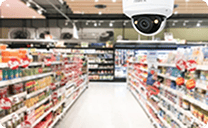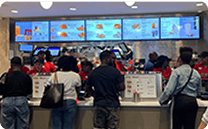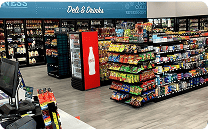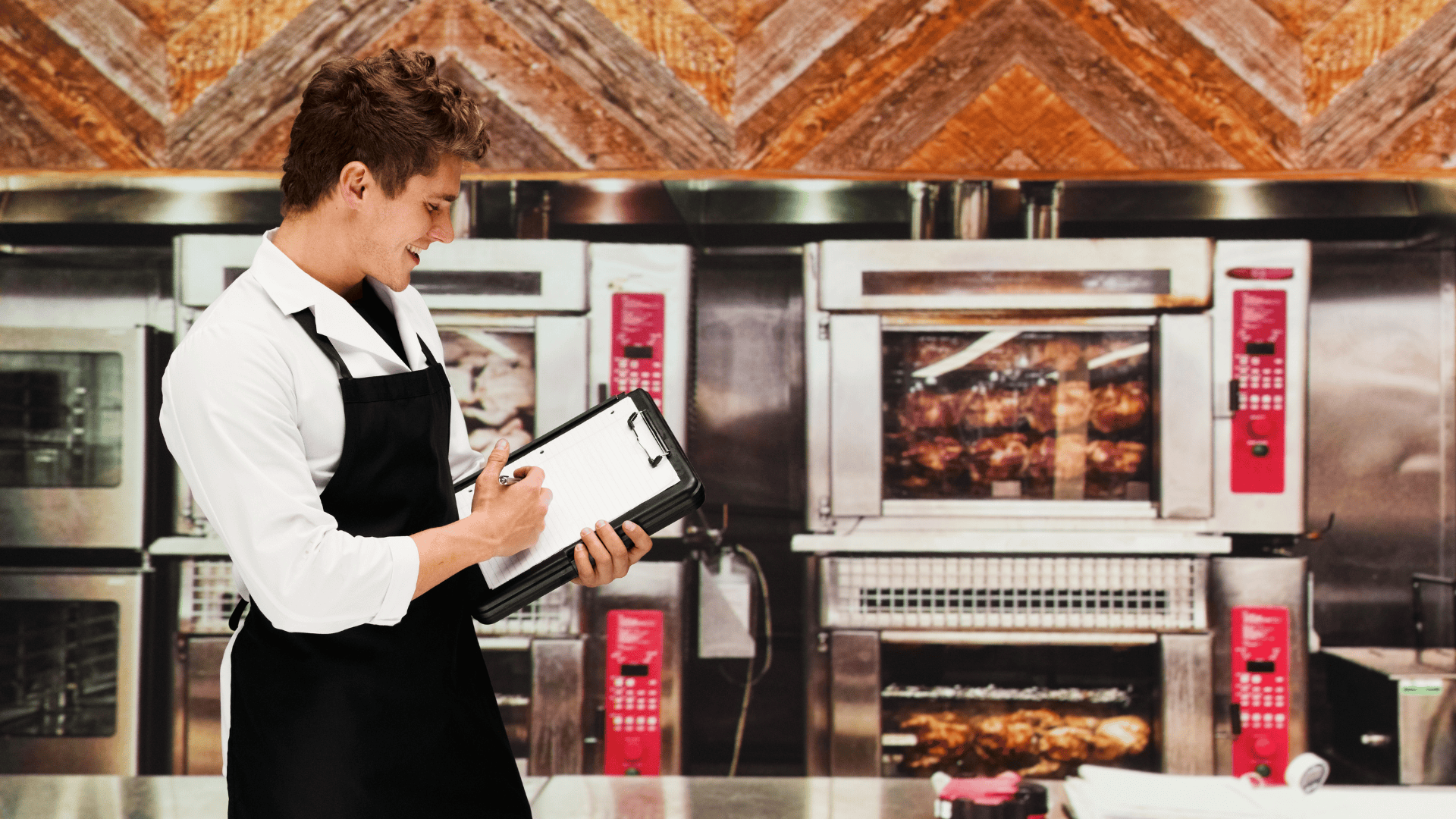In This article
Introduction
Loss prevention in restaurants is a primary concern for every restaurant operator. Narrow profit margins and the risks of theft, fraud, spoilage, and operational errors make preventing losses and preserving profits critical strategic imperatives. Possible losses range from employee theft and food waste to cash mishandling and vendor fraud. This comprehensive restaurant loss prevention checklist provides you with multiple actionable steps you can take to safeguard your business effectively.
Importance of a Loss Prevention Policy
Effective loss prevention begins with a clear, solid loss prevention policy. This policy is not just a document, but a strategic tool that serves as the foundation for protecting your restaurant’s assets. It defines expectations, responsibilities, and consequences, ensuring that you and your staff are well-informed and prepared. Here are three critical steps to successfully developing and adopting your loss prevention policy.
- Drafting the Policy: Clearly outline your security measures, cash handling expectations, inventory protocols, and disciplinary procedures.
- Communicating to Staff: Introduce the policy during onboarding and reinforce it regularly with signage and periodic refresher training.
- Gaining Employee Buy-In: Engage staff by explaining the impact of losses on their jobs and incentives. Foster a collaborative focus on loss prevention with accountability programs that explain every employee’s role.
Opening and Closing Procedures
Structured, well-documented store opening and closing procedures deter theft and ensure that daily operations start and end securely.
- Opening Protocols:
- Inspect premises for any overnight tampering and report any suspicious circumstances immediately.
- Verify alarm system disarmament.
- Test registers and point-of-sale (POS) systems.
- Count and record cash drawer start amounts.
- Closing Protocols:
- Lock all doors and windows.
- Secure all cash in safes under dual control.
- Turn off nonessential equipment.
- Set security alarms and monitor camera feeds.
Cash Handling Best Practices
Accurate cash handling procedures for restaurants are essential for safeguarding your cash flow. Clear, well-documented, and consistently enforced cash handling procedures can also reduce and speed the resolution of discrepancies.
- Key Tips:
- Ensure that staff know to never leave cash unattended.
- Assign individual cash drawers to specific staffers.
- Mandate dual control access to all safes.
- Conduct blind cash drops to reduce temptation.
- Schedule regular and unpredictable bank deposits.
- Change and monitor routes taken to and from banks to avoid and identify surveillance by malefactors.
- Investigate discrepancies immediately and report and document them thoroughly.
- Avoid “skimming” by enforcing cash drop policies mid-shift.
Employee Hiring and Training
Your employees are not just staff members; they are your first line of defense against loss prevention. Ensure your hiring and training processes emphasize and underscore each employee’s value to your loss prevention efforts, making them feel valued and integral to the process.
- Hiring Tips:
- Conduct credible, detailed background checks and verify references.
- Ask interview questions that elicit responses about honesty and integrity in addition to skills, background, and aspirations.
- Training:
- Emphasize and encourage ethical behavior and share examples of employees going “above and beyond.”
- Train on identifying suspicious behaviors and showcase examples of successful loss prevention efforts.
- Regularly update staff on loss prevention in restaurants to reinforce the importance of their contributions to your efforts.
Inventory Management
Effective inventory management is a critical component of loss prevention for restaurants. Well-executed inventory management helps avoid losses from over-ordering, theft, and spoilage.
- Best Practices:
- Use inventory control systems such as MarketMan or GoAudits.
- Leverage inventory management apps to detect anomalies quickly.
- Perform weekly spot checks and complete monthly audits.
- Track waste and analyze trends.
Managing Keys and Access Cards
You must carefully manage access to your inventory to minimize inventory loss. This means you must manage access to keys and access cards closely and consistently.
- Best Practices:
- Limit key or access card distribution based on specific roles and tasks.
- Keep detailed access logs, including when access is activated and no longer needed.
- Require immediate reporting of lost keys or cards, and if possible, disable them until they are found or replaced.
- Conduct periodic access audits.
General Security Measures
Your overall security is an essential contributor to your loss prevention efforts. General security acts as a deterrent and an investigative tool.
- Surveillance:
- Install cameras that record high-quality images and audio at cash registers, storage areas, and entry points.
- Ensure that camera recordings are stored securely and backed up, preferably on-site and in the cloud.
- Maintain recordings for at least 30 days.
- Lighting:
- Ensure parking lots, dumpsters, and back entrances are well-lit.
- Combine motion-activated lighting and cameras to maximize scrutiny, especially of infrequently used or obscured access points.
- Cybersecurity:
- Protect POS systems with firewalls and regular software updates.
- Control “administrator” and “super-user” access to all information and security management tools.
Communication and Team Development
An open culture discourages dishonest behavior. Combine open communication with recognition of noteworthy actions by or ideas from team members.
- Tactics:
- Hold regular meetings focused on loss prevention tips.
- Encourage anonymous reporting channels.
- Celebrate staff who demonstrate integrity or perform exceptional loss prevention actions.
Tips for Minimizing Loss from Theft
No loss prevention strategy is completely invulnerable to theft. Common types of theft include “sweethearting,” giving free goods or unauthorized discounts to friends or family, refund fraud, and food theft. Here is some practical advice to minimize or prevent such losses.
- Monitor High-Risk Areas, especially bar stock, cash drawers, and storage rooms.
- Rotate Staff Duties to prevent repeated patterns that lead to complacency and facilitate theft.
- Use Mystery Shoppers to uncover procedural weaknesses or security gaps.
- Encourage Honesty by celebrating and rewarding employees who report or interdict suspicious activities.
Compliance and Legal Considerations
Your loss prevention strategies must not only be effective but also respect labor laws and employee rights. You must also ensure your loss prevention and cybersecurity efforts comply with legal protections for personal and proprietary information. This ensures that your business is secure and protected, giving you and your staff peace of mind. Examples include the California Consumer Protection Act (CCPA) and the General Data Protection Regulation (GDPR), which applies to European Union (EU) citizens wherever they live, work, or shop.
- Compliance Tips:
- Clearly define search policies and have employees sign acknowledgments.
- Follow federal and local labor laws regarding surveillance and employee searches.
- Document all disciplinary actions carefully.
- Have HR specialists or legal counsel review your loss prevention policies and compliance efforts at least annually to maintain compliance with evolving regulations.
Technology in Loss Prevention
Incorporating modern tools can significantly strengthen your restaurant loss prevention checklist. Here are some examples of technological innovations that can help you achieve effective, proactive protection.
- POS analytics can help you identify voids, discounts, or refund patterns that may suggest theft.
- AI-driven fraud detection tools like Delaget and GoAudits can identify and analyze potentially loss-related behaviors in real time.
- Real-time monitoring via mobile apps enables you to track sales and inventory trends remotely.
Handling Discrepancies
Despite your team’s best efforts, discrepancies can happen. Swift action to resolve discrepancies can reduce or prevent repeat offenses. Documentation provides valuable records for identifying patterns and preventing future incidents.
- Best Practices:
- Investigate immediately.
- Conduct interviews respectfully and in compliance with all relevant labor laws.
- Document everything thoroughly.
- Train managers on escalation protocols and review and update that training annually.
Monitoring and Reviewing Systems
Loss prevention is not a “set-and-forget” activity. You must monitor and review your efforts periodically to keep them effective as market conditions, types of losses, and prevention methods evolve.
- Periodic Reviews:
- Schedule quarterly audits of cash handling processes, inventory management, and security systems.
- Update employee training based on identified vulnerabilities and other relevant changes.
- Adapt your policies to new threats and trends as they emerge.
Loss Prevention Tips and Checklists
Here’s an actionable restaurant loss prevention checklist based on the guidance presented above. Integrate this checklist into daily management routines to ensure consistent application.
- ☑ Develop and communicate a written loss prevention policy.
- ☑ Implement strict opening and closing protocols.
- ☑ Establish secure cash handling procedures for restaurants.
- ☑ Hire trustworthy employees and conduct thorough background checks.
- ☑ Use inventory management systems and conduct regular audits.
- ☑ Control key and access card distribution.
- ☑ Install and maintain surveillance systems.
- ☑ Hold regular team meetings on security practices.
- ☑ Encourage and reward reporting of suspicious activity.
- ☑ Ensure compliance with labor laws and privacy protection regulations.
- ☑ Leverage technologies such as POS analytics and AI tools.
- ☑ Document all incidents and discrepancies promptly.
- ☑ Review and update loss prevention strategies regularly.
Conclusion
Effective loss prevention in restaurants requires a strategic, layered, consistent approach. By creating strong policies, leveraging technology, and fostering a transparent, collaborative, anti-theft culture, you can significantly reduce loss and protect your bottom line. Use the restaurant loss prevention checklist provided here to integrate best practices into your operations and make your business more secure and more profitable. Learn more about DTiQ’s loss prevention solution by visiting our website.
Frequently Asked Questions
Q: Why is loss prevention so critical for restaurants?
A: Tight margins and high cash transactions mean small losses can quickly become major profit drains.
Q: What is the most common type of restaurant loss?
A: Employee theft and food waste are among the most common.
Q: How often should restaurants review their loss prevention policies?
A: At least quarterly or after any significant incident.
Q: Are surveillance cameras enough to prevent loss?
A: Cameras are vital but must be combined with strong procedures and focused, sustained staff training for maximum effectiveness.
Q: Can POS systems help detect theft?
A: Yes. Advanced POS analytics highlight suspicious patterns like frequent voids, manual discounts, or canceled orders.



























